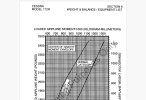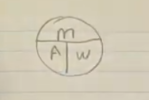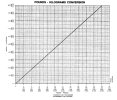Sac Arrow
Touchdown! Greaser!
- Joined
- May 11, 2010
- Messages
- 20,355
- Location
- Charlotte, NC
- Display Name
Display name:
Snorting his way across the USA
Long story short. Okay it is a short story. I have been invited to participate in an informal ground school, to present a specific topic. That topic is weight & balance. Note the graph below, for a 172R. Many people are familiar with that graph. In fact most people are, or another Cessna flavor. I'm too lazy to look at other AFMs to see if this error is propagated by other manufacturers.

Okay here is my issue: The sample procedures are given in English units. That's all good. Great. But as you can see, the graph is presented both in English units, lbs and lb-inches, and in SI units.
Sort of. Airplane weight is given in kilograms. We generally use the term "weight" when referring to our body mass in kilograms, but a kilogram is not a weight, it is a mass.There is nothing wrong with referring to a material quantity in terms of mass, as long as we understand it is a mass, or, it truly doesn't make a difference. But, the moment is given in 'kilogram-millimeters.'
THERE IS NO SUCH THING AS A F(*&R&*(#$ING KILOGRAM-MILLIMETER!! No. The SI unit of moment is the newton-meter. One kilogram weighs 9.8 newtons. If you were to suspend a one kilogram mass at the end of a one meter pole, it would exert a force of 9.8 newtons, and result in a moment of 9.8 newton meters at the other end of the pole. If your body mass is one hundred kilograms on earth, it is still one hundred kilograms on the moon, on Jupiter, or in outer space. Your weight in pounds, or newtons on the moon will be one sixth of what it is on earth.
Now I know why they did this. They feel that converting the plane's mass to an actual weight (and force) is super fluous, so treating the kilogram as some sort of pseudo-force is harmless and it is going to yield the same result anyway, so why bother.
If one of my engineers gave me a calculation that involved kilogram-meters, he or she would be fired on the spot. That's the kind of **** that causes structures to collapse and people to get killed, so why not get the physics right?

Okay here is my issue: The sample procedures are given in English units. That's all good. Great. But as you can see, the graph is presented both in English units, lbs and lb-inches, and in SI units.
Sort of. Airplane weight is given in kilograms. We generally use the term "weight" when referring to our body mass in kilograms, but a kilogram is not a weight, it is a mass.There is nothing wrong with referring to a material quantity in terms of mass, as long as we understand it is a mass, or, it truly doesn't make a difference. But, the moment is given in 'kilogram-millimeters.'
THERE IS NO SUCH THING AS A F(*&R&*(#$ING KILOGRAM-MILLIMETER!! No. The SI unit of moment is the newton-meter. One kilogram weighs 9.8 newtons. If you were to suspend a one kilogram mass at the end of a one meter pole, it would exert a force of 9.8 newtons, and result in a moment of 9.8 newton meters at the other end of the pole. If your body mass is one hundred kilograms on earth, it is still one hundred kilograms on the moon, on Jupiter, or in outer space. Your weight in pounds, or newtons on the moon will be one sixth of what it is on earth.
Now I know why they did this. They feel that converting the plane's mass to an actual weight (and force) is super fluous, so treating the kilogram as some sort of pseudo-force is harmless and it is going to yield the same result anyway, so why bother.
If one of my engineers gave me a calculation that involved kilogram-meters, he or she would be fired on the spot. That's the kind of **** that causes structures to collapse and people to get killed, so why not get the physics right?






